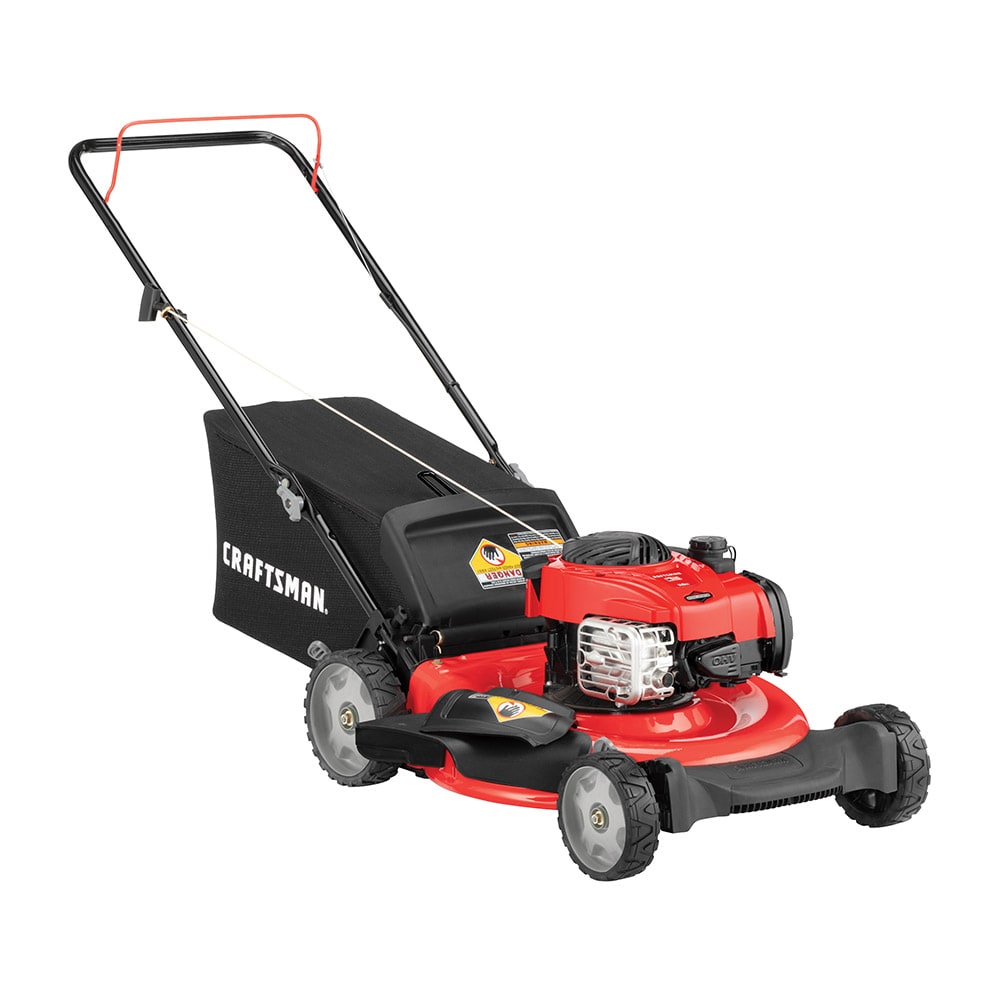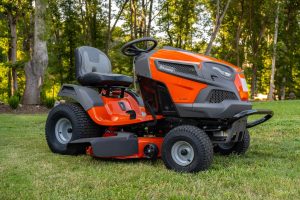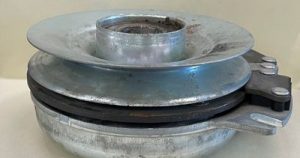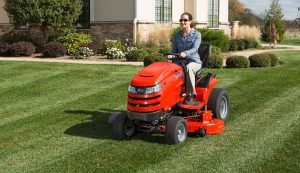9 Reasons Why Your Push Mower Isn’t Working
When your manual lawn mower unexpectedly turns off, it can be very annoying. You might be able to get it going again, but it won’t stay running long enough for you to complete your lawn mowing.
There are many things that can cause a push mower to stop working, including a clogged fuel filter, a clogged fuel line, dirty carburetor, a clogged air filter, the wrong choke setting, a faulty spark plug, faulty ignition coil, a faulty gas cap, an incorrect engine oil level, a clogged mower deck, or old gas.
Before attempting any repairs, make sure you’ve read and understood the safety instructions in the manual. You have to take precautions, like removing the wire from the spark plug and waiting for the engine to completely cool down.

Before diagnosing, repairing, or operating, make sure you’ve read and fully understood all relevant safety information found in the equipment’s operator’s manual. If you are unsure of how to proceed, if you lack the necessary knowledge, or if your health prevents you from completing the repair safely, you should seek the advice of a professional.
Table of Contents
This is Why Your Push Mower Isn’t Working
Bad or stale fuel renders a push mower inoperable.
Old gas is a common cause of a push mower’s inability to start or continue running. This is due to the fact that gasoline degrades over time in your mower.
Gas quickly deteriorates after being released. Beginning as soon as 30 days after your purchase, this may occur.
Ethanol in gasoline attracts moisture, which then congeals into varnish and gummy deposits throughout the fuel system. Blockages in the fuel system from these items can reduce the amount of fuel getting to the engine. It can also lead to the breakdown of fuel system parts.
Keep these helpful hints in mind to lessen the impact of gas:
- Fresh gas should only be bought in quantities that can be used up within 30 days.
- Keep the ethanol content of your gas to no more than 10% and use gas with at least an 87 octane rating.
- Gasoline and premium 2-cycle engine oil should be combined for use in push mowers.
- Fuel additives like Sea Foam Motor Treatment and STA-BIL can be used to store gas for longer than 30 days. It is imperative that this product be added to gas while it is still in its freshest state. Outdated fuel is useless for this purpose. To learn more about fuel stabilizers, click here.
If you want to know more about ethanol and the correct gas to use in a push mower, I’ve written an article that covers gas for both 2-cycle and 4-cycle push mowers.
Fuel Capacity Restrictions for Push Mowers
The fuel flow through the mower can be restricted due to clogging if old fuel is used. However, dirt or debris that makes its way into the fuel system is also a major contributor to these limitations.
The fuel filter, fuel line, and fuel pump are the main places to look for blockages in the fuel system. If the fuel flow is adequate through these parts, you should examine the carburetor.
Push Mower with a Filthy Carburetor
On a push mower, the carburetor controls the flow of fuel into the engine, where it combines with air to produce combustion. A push lawnmower will cease to operate if its carburetor fails to provide sufficient fuel.
Over time, a carburetor will wear out to the point where it no longer functions. But using outdated gas will shorten its useful life. This is due to the fact that the varnish and deposits in old fuel make the fuel jet clog, making it difficult to supply fuel to the engine’s many tiny moving parts.
Here are some quick checks you can do to see if your running issues could be caused by a dirty carburetor:
- Verify that fuel is reaching the carburetor. This can be accomplished by checking the fuel flow to the carburetor and adjusting as necessary. In case you aren’t, you should inspect the fuel filter and fuel lines.
- Carefully take out the air filter from its housing, being mindful of the air intake.
- You can now start your lawnmower after spraying carburetor cleaner into the air intake. Do not use starter fluid. If it starts out strong but gradually loses power until it eventually cuts out, it’s probably a sign of a dirty carburetor.
- Take the next step and clean the carburetor by taking it apart.
Even after cleaning the carburetor, if the problem persists, you may need to have it rebuilt or get a new one.
A Push Lawnmower With Its Air Filter Connected
Your push mower’s air filter should be used continuously. It’s like an insurance policy against untimely engine wear. In doing so, it prevents debris and dirt from entering the engine’s air intake, thereby preserving its health.
Maintaining a clean and well-checked oil filter is crucial for the safety of your engine. Filter clogging prevents enough air from reaching the engine if it isn’t regularly maintained. Push mowers are prone to overheating if this is done, rendering them unusable.
The air filter should be changed once a year and cleaned multiple times during the mowing season. Mowing in extremely dusty conditions requires more frequent maintenance on the air filter.
Each year, get a new air filter and make sure to clean it several times during the mowing season following the guidelines below for your specific air filter model.
How to Change the Air Filter on a Push Lawn Mower
- You can get rid of as much dust and debris as you can from a paper air filter by tapping it against a hard surface.
- To check if light passes through the paper filter, simply hold it up to the light.
- When light is visible again, reuse the filter.
- If there is no light coming through, the filter is extremely dirty, or it is soiled with oil, you should get a new filter.
Reconnect the air filter cover.
Purify the Foam Filter of a Push Mower
(These are instructions for the main filter itself; a paper filter is not included.)
- Remove dirt and oil from your foam filter by washing it in warm water with a drop or two of mild dish soap.
- Please rinse with water until all soap is gone.
- Extend flat and dry at room temperature. Drying the filter more quickly can be accomplished by leaving it in the open air.
- Apply a thin layer of filter oil once the coating has dried.
- Foam filters should be replaced when they become brittle, develop brown spots, or become torn.
Reconnect the air filter cover.
Errors Caused by a Misplaced Choke on a Push Mower
When starting a cold engine, you should use the choke to limit airflow. This makes it possible for the higher gas-to-air ratio required by a cold engine compared to that of a warm engine.
After the engine has been started and warmed up, the choke must be moved to the open/run position to let more air into the cylinder and keep the engine running. The push lawnmower will stop working if it isn’t set up correctly.
There is no need to change the choke lever on some push mowers because they have an automatic choke. There could still be a problem with the choke even if there isn’t a choke lever.
Both automatic and manual chokes have the same potential problem of getting stuck. Carburetor cleaner can be used to lubricate the choke shaft and linkage, getting the system back into proper working order.
Soiled Push Mower Spark Plug
A push mower won’t start if the spark plug is fouled, for example. As carbon, dirt, and oil build up on the plug, it loses its ability to generate a spark. Take out the spark plug and inspect it.
If the spark plug is very black in color, or if the porcelain is broken or the electrode is burnt, you should get a new one.
Lightly dirty tips that are otherwise functional can be used; just make sure to use a wire brush to get rid of any carbon and dirt buildup before you do.
Make sure the spark plug is properly gapped according to the manufacturer’s instructions. You can learn all about this in the manual that came with your vehicle.
Problems with the push mower’s operation can also be caused by a spark plug that is either improperly gapped or is not securely attached.
If problems persist after you’ve verified that you’re using a good spark plug or installed a new one, you should move on to inspecting the ignition coil.
Broken Ignition Coil on a Push Mower
Your push mower’s ignition coil may be to blame if it dies mid-mowing. When the lawnmower heats up, the ignition coil’s windings can come apart and cause a short.
Because of this, the spark plug will not generate a spark because it will not receive the proper voltage. With the help of an ohmmeter, you can test for a disruption in the circuit.
A Problem with the Gas Cap on the Push Mower
Your manual lawnmower’s gas cap has a vent to let air circulate inside. So long as there is some way to equalize the air pressure, the fuel tank won’t develop a vacuum.
When the tank is evacuated, the fuel lines will be sealed off, preventing any fuel from escaping. As a result, the mower’s engine will die from lack of fuel and it will shut off.
Remove the fuel cap and restart the mower once it has cooled down. You might have an issue with the fuel cap vent if starting and running are unremarkable.
Replace the fuel tank cap and keep running the mower to see if it automatically turns off after a certain amount of time.
Put a new gas cap on the push mower.
Hot Engine Causes Push Mower to Fail
The engine of a push mower will shut down if it gets too hot. One or more of the following may be to blame: insufficient engine oil, the wrong kind of oil, a blocked mower deck, or a clogged air filter.
Read 7 Things That Can Cause a Lawn Mower to Overheat for more information on why a push mower might overheat.







